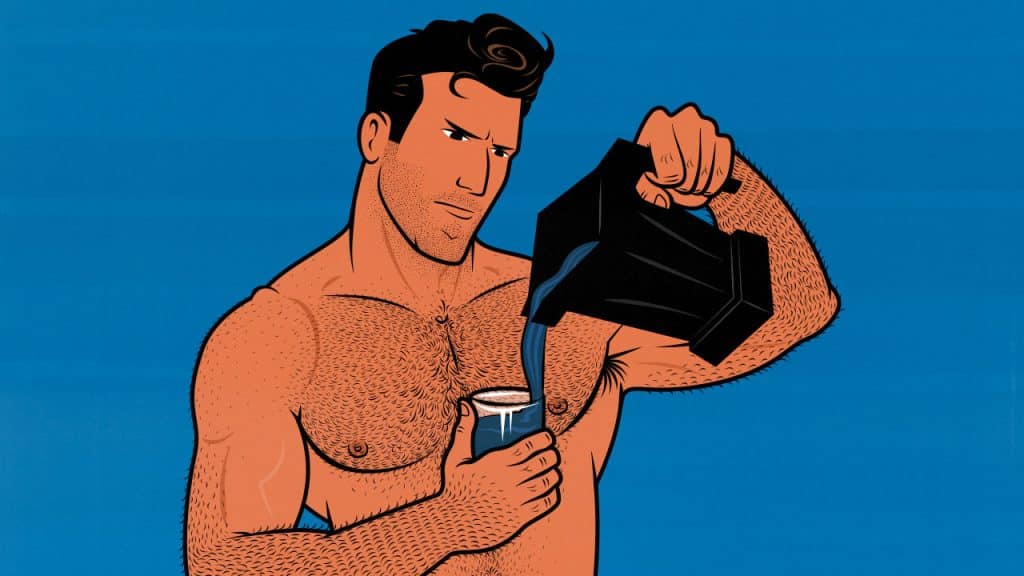
How to Make High-Calorie Bulking Smoothies (to Gain Weight)
When you blend whole foods into smoothies, they keep their nutritional value, they get quicker to prepare and eat, and they don’t leave you feeling as full. That’s why they’re so popular in the fitness industry. Smoothies are the easiest way to consume several servings of protein, fruits, veggies, omega-3s, phytonutrients, and fibre.
If you make a high-calorie bulking smoothie, it can shift you into an effortless calorie surplus, making it much easier to gain weight (study). We’ve used these smoothies to gain nearly 70 pounds each. We’ve also used them with thousands of clients, ranging from everyday people all the way up to professional and Olympic athletes.
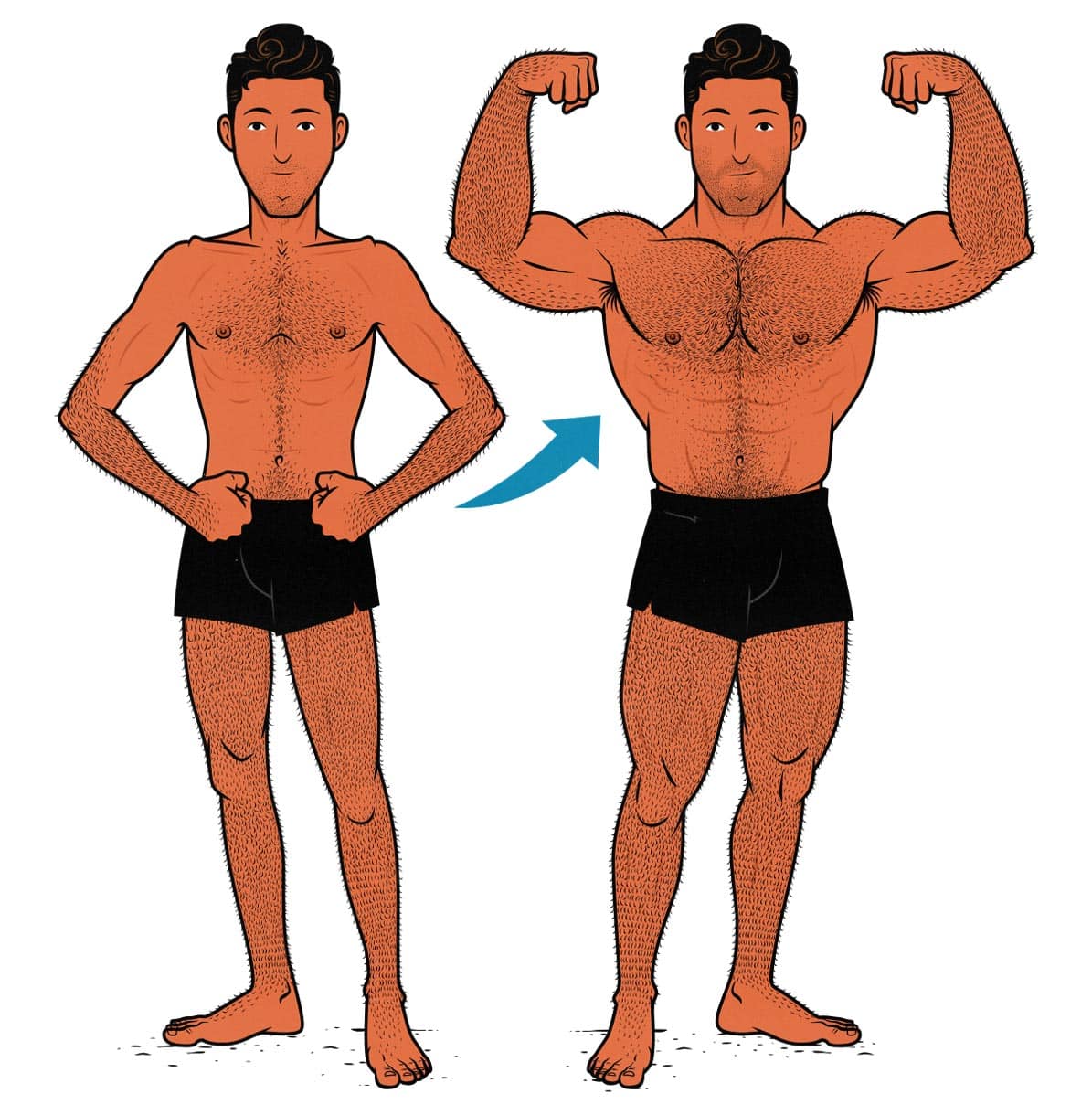
The Benefits of High-Calorie Smoothies
A high-calorie smoothie can give you anywhere from 500–1,000 calories per serving. That’s 4x as many calories as you’d get from a protein shake, bringing it up into the realm of mass gainer shakes.
What makes smoothies even better than mass gainers, though, is that you can make them from nutritious whole foods. Instead of reaching your calorie goals with powders, you’re reaching them by consuming more fruits, veggies, berries, dairy, whole grains, nuts, and seeds.
That means high-calorie smoothies aren’t just good for building muscle; they’re also incredibly nutritious. If your diet is low in fibre, a smoothie can easily add a dozen grams. If you need more servings of fruits and veggies, you can fit several in a single glass. If you’ve been neglecting your leafy greens, the blender will deliver them to you.
To be fair, you can get those same benefits from a steaming bowl of chili, or stew, or stir fry. What makes bulking smoothies special is that they take minutes to prepare and seconds to drink. You barely even need to know what you’re doing. Just throw the ingredients in a blender.
And, as mentioned above, liquid calories are incredibly easy on the appetite. If you’ve been having a hard time eating enough calories to gain weight—as we did—smoothies can make your life much easier.
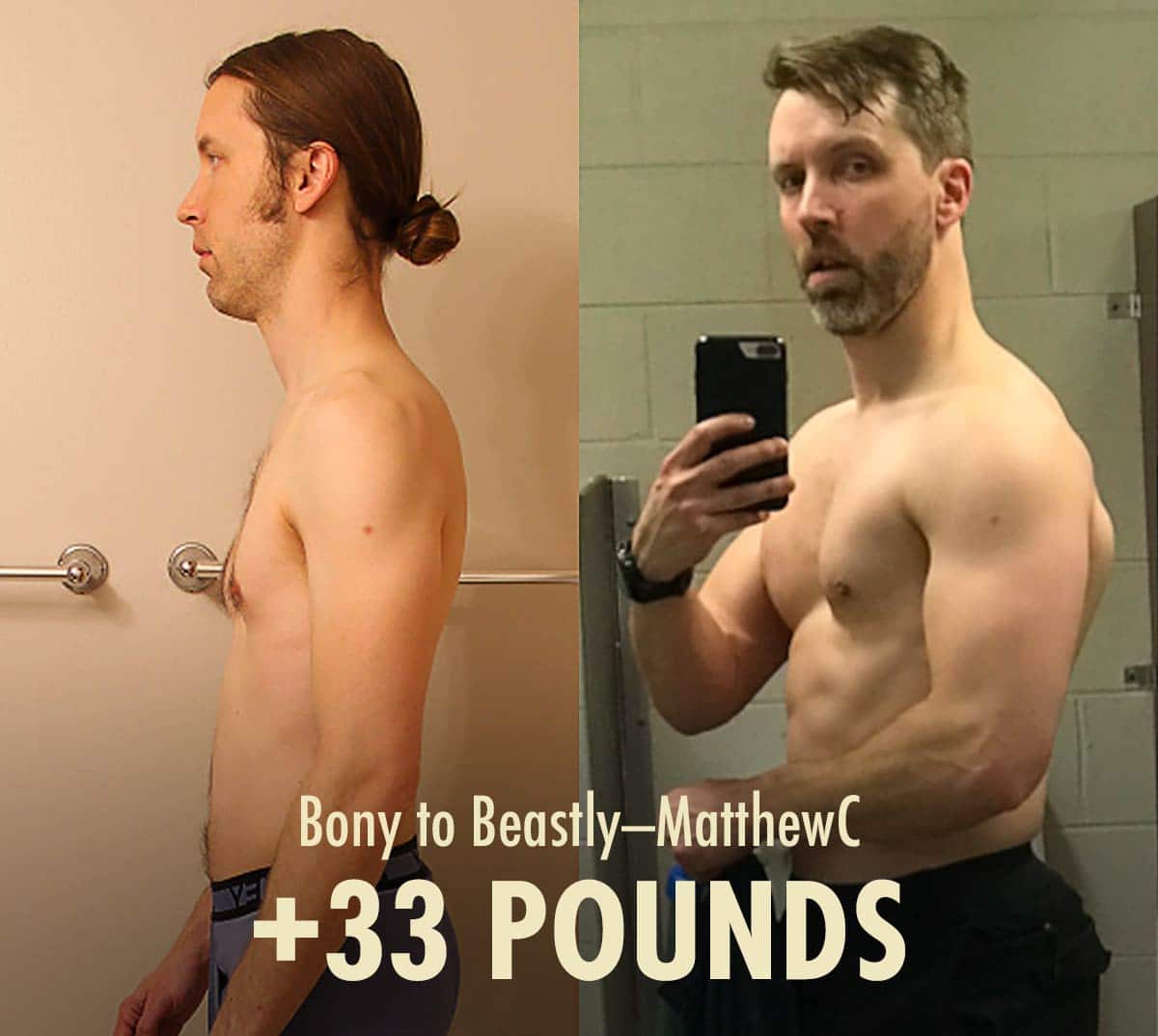
How to Make a Bulking Smoothie
All the best bulking smoothies have the same structure. They’re supposed to be a balanced bulking meal, so you need a source of protein, carbs, dietary fat, and fibre. It also helps to have a nice mix of vitamins, minerals, and other micronutrients.
- Protein: A good bulking smoothie will have at least 20 grams of protein and often more than 40. think of Greek yogurt, kefir, milk, soy milk, pumpkin seeds, and protein powder. You can also get smaller amounts of protein from nuts, seeds, and oats.
- Fruits and Berries: Fruits are rich in carbs, fibre, vitamins, and minerals. They can make your smoothie sweet, tart, or sour. Think of bananas, frozen mixed berries, mangoes, pineapples, and citrus fruits.
- Veggies: Veggies are rich in fibre, vitamins, minerals and antioxidants, but be careful—some of them have strong flavours. Fresh (not frozen) spinach and kale tend to be best.
- Dietary Fats: Fat is nutritious and incredibly calorically dense. Think of almond butter, peanut butter, mixed nuts, chia seeds, pumpkin seeds, avocadoes, and cacao.
- Fluids: The most common beginner mistake is to use too little liquid. Use water, ice cubes, milk, oat milk, or soy milk.
- Honey: Most health-food bars make their smoothies more palatable by adding scoops of ice cream. We recommend honey. It’s a dense and nutritious source of sweet calories.
- Something frozen. Smoothies taste best when they’re cold. We recommend frozen bananas, frozen berries, or ice cubes.
If you choose an ingredient or two from each category, you’ll have a great bulking smoothie.
High-Calorie Bulking Smoothie Recipes
The Classic Healthy Green Smoothie (500 calories)
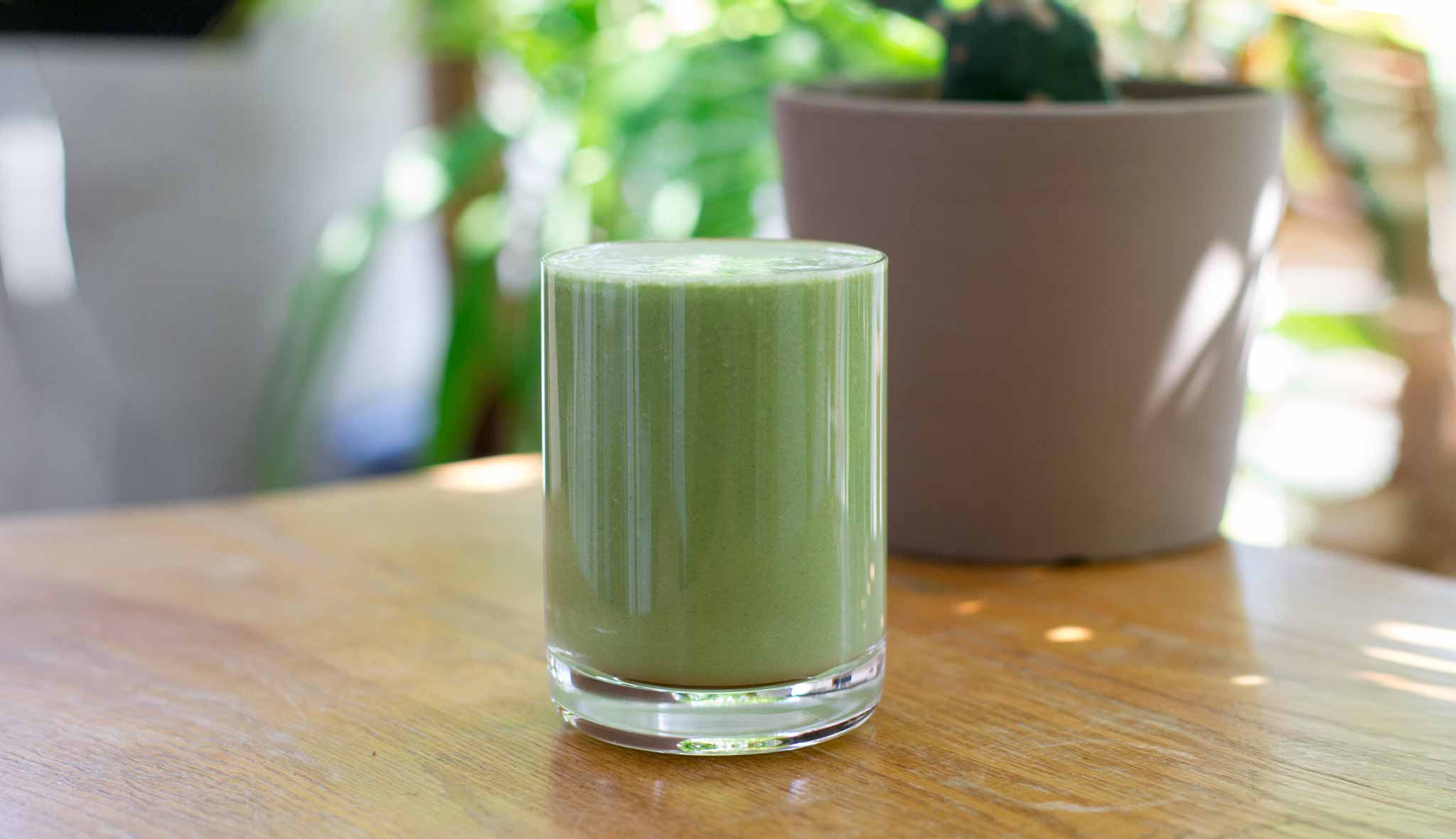
This is one of the simplest recipes, and it teaches an important lesson: less can be more. It doesn’t take much to get a balanced, nutritious, and delicious smoothie. Many of us overdo it, combining too many disparate ingredients into a discordant mess.
Ingredients
- 1 banana
- 1 handful fresh spinach
- 1 tablespoon of almond butter
- 4 frozen strawberries
- 1 tablespoon chia seeds
- 225ml of milk, soy milk, or oat milk
- 1 scoop of unflavoured protein powder
Instructions
- Blend all the ingredients except for the protein powder.
- Add the protein powder and blend it gently until it’s mixed in.
Calories & Macros
- 500 calories per serving (makes 1 serving)
- 40 grams of protein
- 55 grams of carbs
- 20 grams of fat
- 20 grams of fibre
If you have a large blender, you can blend up two servings, turning this into a 1000-calorie smoothie. However, it’s usually better to start smaller. 500 calories is already enough to move you into a nice calorie surplus. Best to ease into a bulk gradually.
The Caribbean Lassi (500 calories)
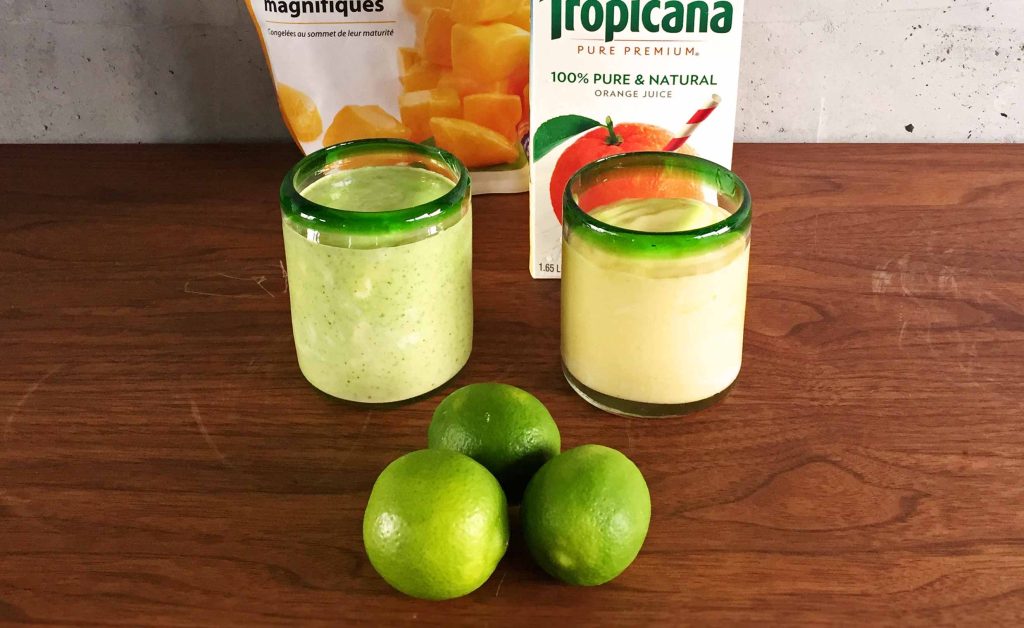
This is an example of a fancier smoothie. It takes a little longer to make, and the ingredients are a bit more expensive, but it’s incredibly nutritious, and I love how it tastes. It’s perfect to have as a snack between meals.
Before this recipe, bulking recipes were a handy meal that helped me get into a calorie surplus. After this recipe, I started looking forward to them. It got my wife excited about them, too.
This recipe doesn’t use protein powder.
Ingredients
- 3 cups frozen mango
- 1 handful of kale (optional)
- 1/4 cup lime juice (about 6 limes)
- 1¾ cups Greek yogurt or kefir
- 1 tablespoon honey
- 1 cup orange juice
Instructions
- Blend all the ingredients.
Calories & Macros
- 500 calories per serving (makes 2 servings)
- 40 grams of protein
- 70 grams of carbs
- 15 grams of fat
- 15 grams of fibre
Again, feel free to make this recipe larger. Double up on servings if you need to. But I wouldn’t rush into it. You’re already getting a ton of protein and quite a few calories. Smoothies tend to digest more smoothly when they’re less extreme.
The 1,000-Calorie Shake
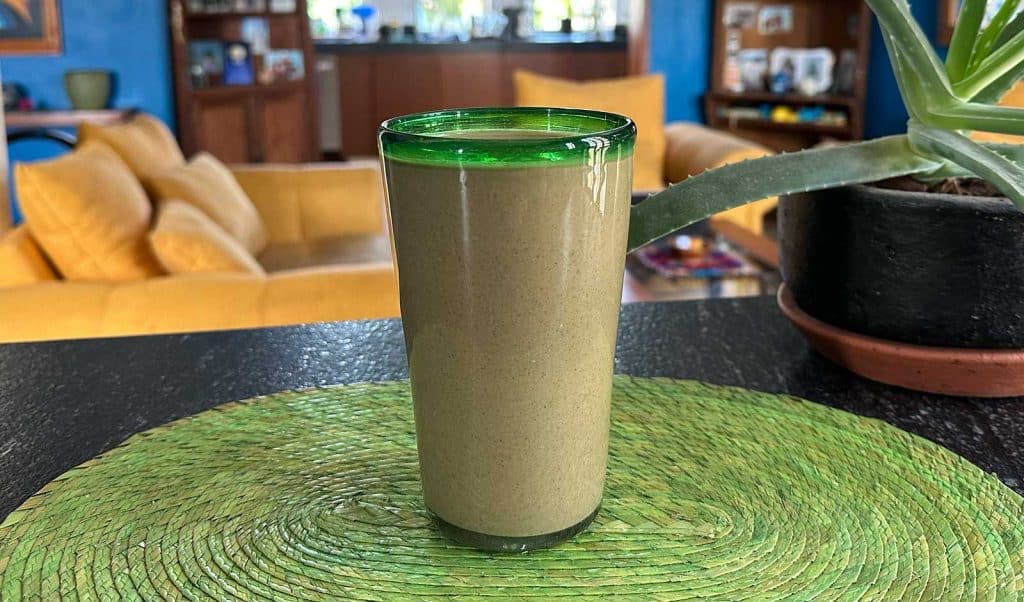
1,000-calorie shakes are challenging to make. Mass gainers do it by using incredibly dense ingredients. We need to take a similar approach, leveraging protein powder, cacao, nut butter, honey, and oats. That allows us to fit a thousand calories into a tall glass, as pictured above.
The flavour is quite nice, the ingredients are nutritious, and the macros are perfect for building muscle. You’ll even get some pump-boosting nitrates from the spinach. But there’s a thorn hidden among the roses. The texture is painfully thick. But such is the bulking struggle. Sometimes, we just need to get the calories in.
Ingredients
- 1 frozen banana
- 1 cup quick oats
- 2 tablespoons almond or peanut butter
- 1 tablespoon chia seeds
- 2 scoops chocolate whey protein isolate
- 2 tablespoons honey
- 1 handful spinach
- 1.5 cups water
Instructions
- Blend the oats, grinding them into a powder.
- Blend the other ingredients except for the protein powder.
- Add the protein powder and blend it gently until it’s mixed in.
Calories & Macros
- 1,000 calories per serving (makes 1 serving)
- 70 grams of protein
- 125 grams of carbs
- 30 grams of fat
- 20 grams of fibre
get our bulking recipes—smoothies, snack, & protein balls
4 free bulking recipes
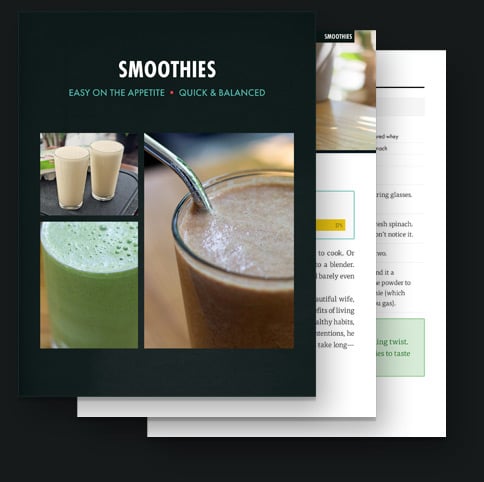
Get four bulking recipes in a downloadable PDF file. Get the full explanation, ingredient list, macros, and steps to follow.
Plus, we’ll make sure you’re on the b2B newsletter, and send you all of our best muscle-building content.
Frequently Asked Questions
What’s The Best Blender for Making Smoothies?
There are two types of blenders that work really well for making smoothies. The first is the bullet blender, where you blend your smoothie right inside the glass you’ll drink it from. However, that glass might not be big enough. You can’t make gargantuan bulking smoothies, you won’t have leftovers, and you can’t make multiple servings at once.
The other type of blender is the all-purpose blender, with the Vitamix as their king. You can use them to grind up oats, cook, and make smoothies as large as you like. My wife can blend up smoothies for the whole family at once, including a tall glass for me.
Here are my two favourite blenders (with Amazon affiliate links):
- Magic Bullet (40ish USD): This is the blender that helped me gain my first 40 pounds. It’s cheap and handy, but the size of the glass can be somewhat limiting.
- Vitamix (400ish USD): This is the blender I use now. It’s expensive, but the quality can’t be beat. If you like smoothies, it’s a great investment.
Can You Make A High-Protein Smoothie Without Protein Powder?
You can make high-protein smoothies without protein powder by using Greek yogurt, kefir, or soy milk. You can also get quite a lot of protein from pumpkin seeds, peanuts, and oats.
Why Do Smoothies Make Me Bloated and Gassy?
It’s really common for bulkers to blend up enormous smoothies with too much of everything in them. I used to do this all the time. I’d pack my blender full of oats, kale, and eggs, fill it to the brim with whole milk, and chug the entire 1,500-calorie monstrosity. There’s just too much in there. I would feel awful afterwards. Stick to sensible serving sizes of each ingredient, and you should be okay.
Also, make sure you aren’t using ingredients you’re allergic or intolerant to. Not everyone does well with dairy. You may struggle with fibre if you’re new to it. You might need to gradually increase your tolerance. Go easy on the oats, chia, spinach, and kale during the first few weeks.
What Next?
If you’re using high-calorie shakes and smoothies to bulk up, make sure you’re following a good hypertrophy training program that stimulates a robust amount of muscle growth.
One of the big mistakes we see is people increasing their calorie intake before they start training for muscle growth. That’s backwards. Start following a good workout program first, then increase your calorie intake. That will encourage your body to invest the calories into muscle growth instead of storing them as body fat.

Alright, that’s it for now. If you want more muscle-building information, we have a free muscle-building newsletter. Or, if you want us to walk you through the entire process of bulking up, check out our Bony to Beastly Program. It includes a customizable workout routine, a bulking diet guide, a recipe book, and support from us in our online community.
We’ll help you get started, track your progress, answer all your questions, and give you feedback as you go through the program. Your results are fully guaranteed. We have an unconditional refund policy.

